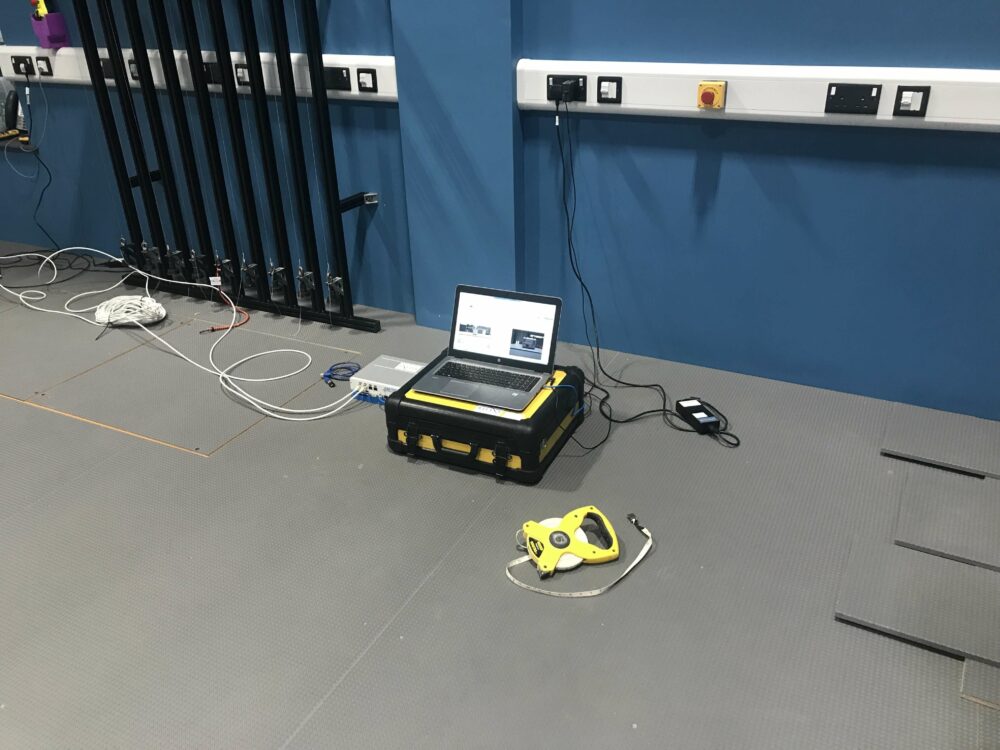The University of Exeter’s VSimulator facility at Exeter Science Park was used as an evaluation test of a new inertial measurement unit (IMU), developed as part of an EPSRC funded research project by Karen Faulkner. The project involved the development of a new portable data acquisition (DAQ) system for monitoring vulnerable bridge infrastructure during a storm event.
The VSimulator motion platform was moved in sequences of six phases of pitch, roll or a combination of both, using different input frequencies and intensities. The platform was tracked using the IMU, OptiTrack markers on two corners of the platform to track motion and a pair of Imetrum cameras with multiple targets on the IMU and other two corners of the platform.
This enabled investigation in one experiment of:
- the capability of the IMU against the rotations derived using the Imetrum camera system, which is recognised as a gold standard;
- the accuracy and resolution of the OptiTrack for small structural movements;
- the performance limits of VSimulator platform in rotation, which we have not previously been able to explore.
The ultimate aim for this EPSRC project was to develop an inertial measurement unit (IMU), which forms part of a stand-alone short-term monitoring system, that can be easily deployed to at-risk bridges over flowing water. These bridges were assessed to determine changes in their condition and identify potential problems to the structure during an extreme weather event.
Karen said: “Ensuring bridges are resilient to extreme weather events is crucial, and monitoring their structural condition reduces the time needed to assess the impact of storm events. It was great to be able to use the VSimulator as a tool to check the accuracy of my DAQ system, before deployment on real world structures.”

